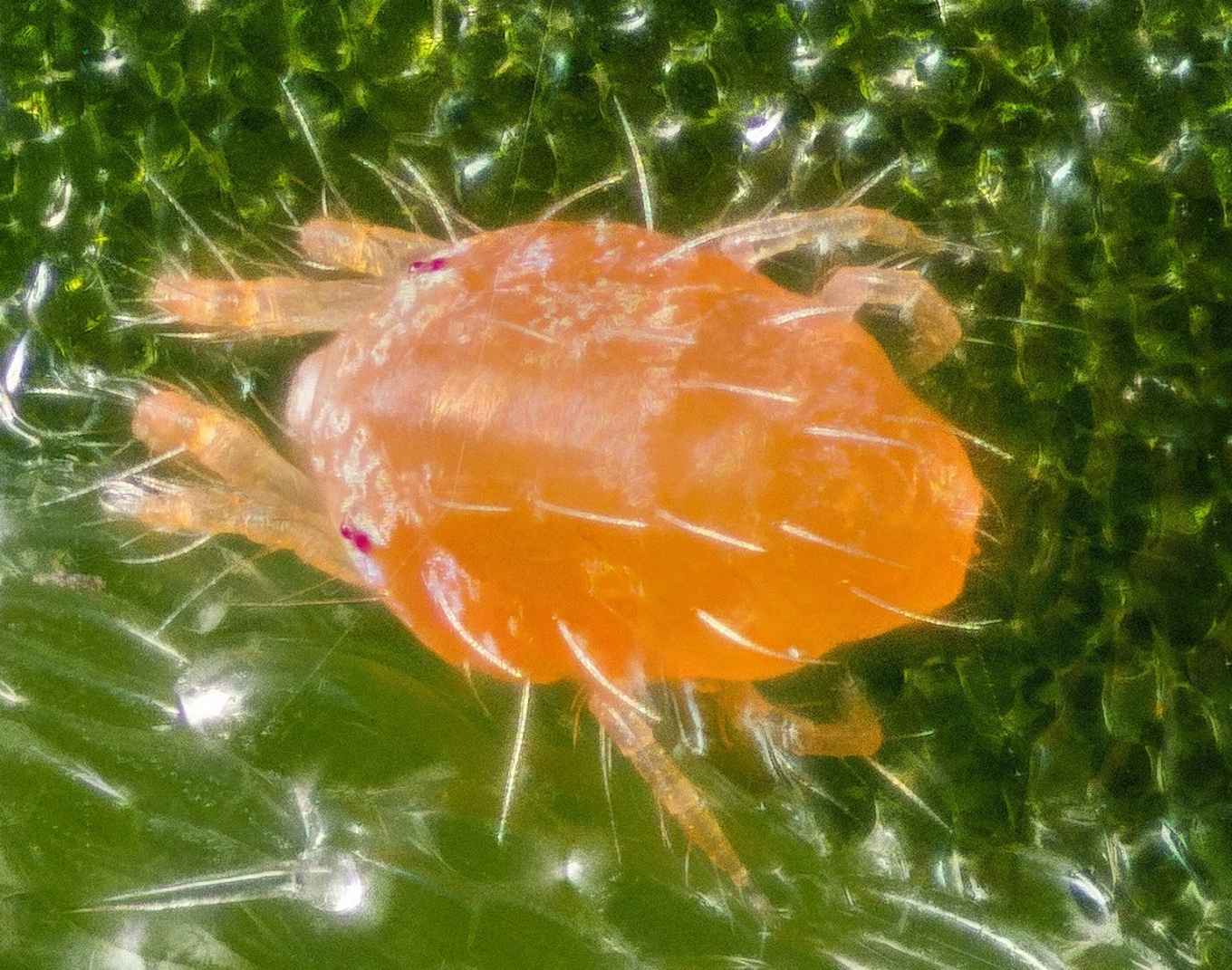Hibernating mites show their true colors
3 August 2017

In summer your garden may be full with mites and insects but when the days shorten many of these disappear to overwinter. Also the two-spotted spider mite hibernates during winter and when it does its body color turns from greenish into bright orange due to accumulation of so-called carotenes (see picture).
Carotenes are pigments you can find everywhere in nature. For example plants are full of carotenes. Carotenes do not only give color to ripe tomatoes or carrots but also are essential for the production of vitamins. Some carotenes are involved in light perception: for example the bright red ‘eyes’ of the mite in the photo are composed of such carotenes. Finally carotenes can also function as anti-oxidants. Clearly they are very important. Plants, fungi and bacteria can makes carotenes themselves but animals can acquire them only from their diet. At least, that is what the textbooks will tell you.
Do it yourself, do it better?
It came as a surprise to everyone when, just a few years ago, scientists from different laboratories discovered the DNA of three different plant-eating arthropods – aphids, gall midges and spider mites - to harbor carotene biosynthesis genes. Just as surprising was the notion that these animals must have acquired these genes from fungi. The researchers now were facing a riddle: why would plant-eating animals produce carotenes themselves when these substances are highly abundant in their food already?
Self-support during hibernation
The answer to his question was found by researcher Thomas Van Leeuwen of the UvA institute for Biodiversity and Ecosystem Dynamics (IBED; research department Evolutionary and Population Biology) and first author Astrid Bryon (Ghent University), together with colleagues from the US, Japan and Greece. The team made use of colorless albino mite-strains and cutting-edge molecular-genetic techniques to discover at least one of the functions of this former fungal gene: it appeared to play an essential role in the mite’s winter sleep. 'Insects and mites have a hibernation strategy that involves a strong reduction of their metabolic rate, food intake and reproduction and a better protection against cold' says Bryon. 'During hibernation they eat virtually nothing and so it seems that mites have solved this problem by incorporating foreign genes that allows them to produce carotenes themselves during their winter sleep'.
This ability allows mites to increase their chances of survival during winter without depending on food to subsequently rapidly colonize new locations in early spring. For a worldwide occurring pest species as the two-spotted spider mite, that has to cope with numerous competitors, this ability may be of crucial importance.
Publication details
Bryon, A., Kurlovs, A. H., Dermauw, W., Greenhalgh, R., Riga, M., Grbic, M., Tirry, L., Osakabe, M., Vontas, J., Clark, R. M. and Van Leeuwen, T. (2017). Disruption of a horizontally transferred phytoene desaturase abolishes carotenoid accumulation and diapause in Tetranychus urticae. PNAS 114 , E5871–E5880.
DOI: 10.1073/pnas.1706865114